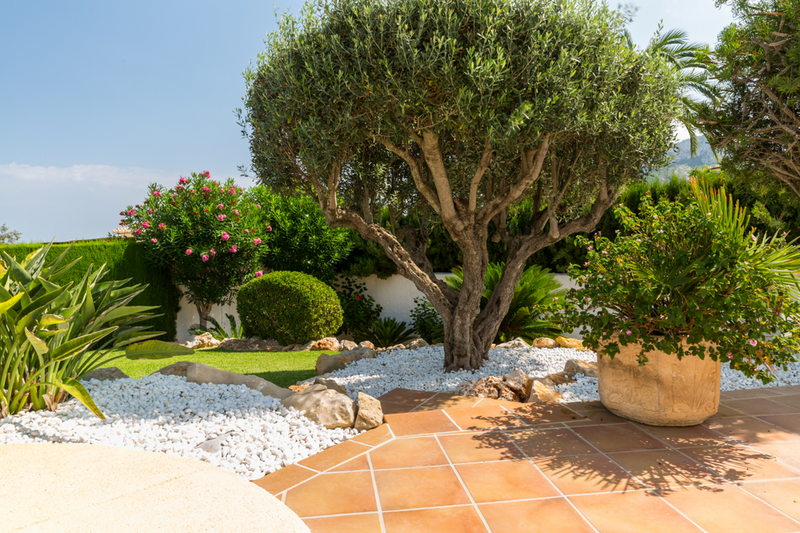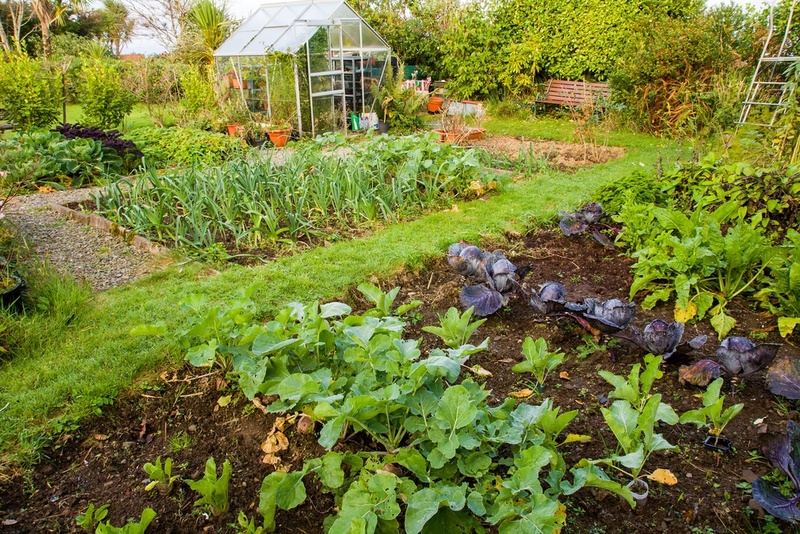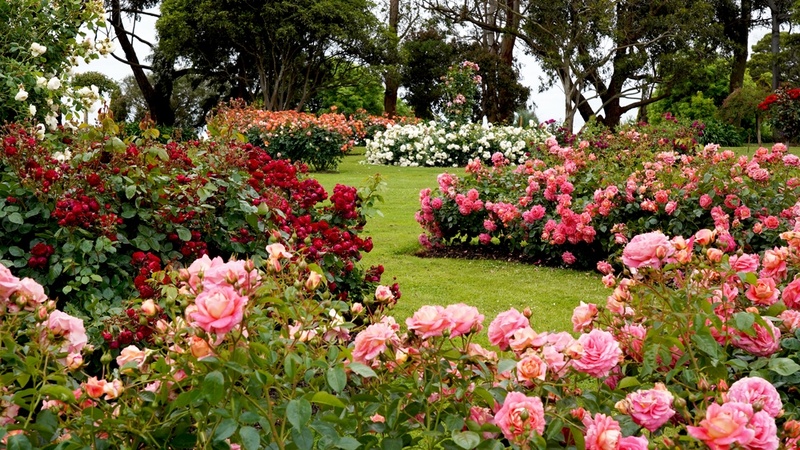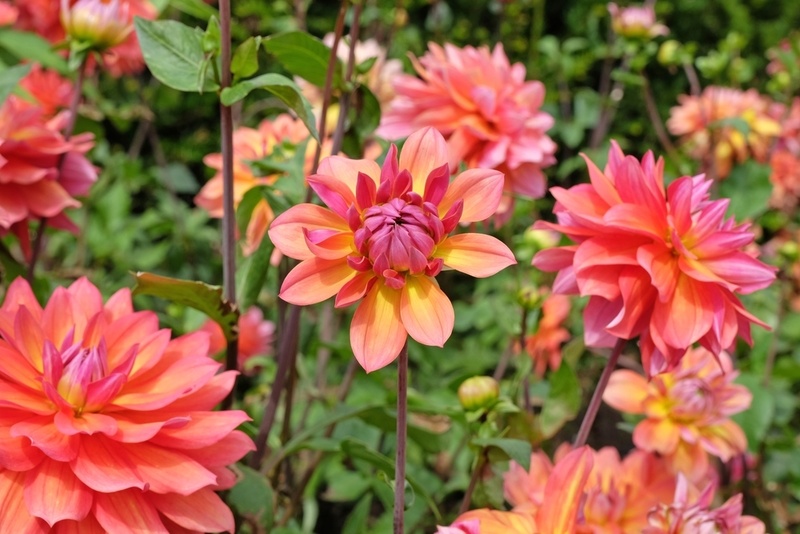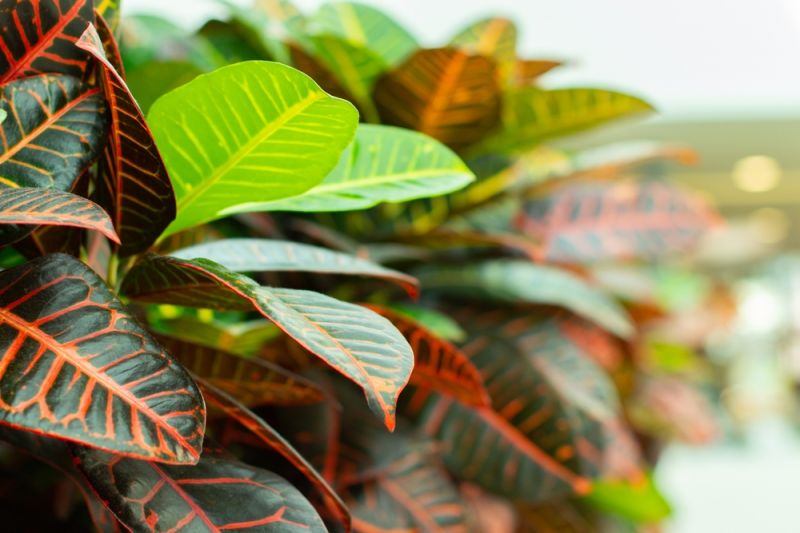
There’s a new houseplant in town. Crotons are back in fashion, and they come in such a wide variety, there’s one for every home. Their colourful variegated leaves can be significant and rounded or narrow and twisted, and they’re not merely green, but purple, black, scarlet, or orange. Crotons used to have a reputation for being a bit fussy, but with the right care, they make spectacular house plants.
All About Crotons
The plants we call crotons (Codiaeum variegatum var pictum) are from the same family as Euphorbias. Coming from tropical forests in south-east Asia, they like a warm, humid environment, and need bright light to develop the best leaf colour, although hot mid-day sun can scorch their leaves. Like Euphorbias, the plants are toxic and contain a milky sap that can irritate the skin, so always wash your hands after handling them and place them out of reach of pets.
Care Tips for Growing Crotons
-
Place your croton where it will get direct sunlight in the morning or late afternoon, with protection from the hot mid-day sun. Avoid draughts - crotons need a minimum temperature of 15ºC (60ºF).
-
Water when the top of the soil feels dry.
-
To create a humid atmosphere around your croton, mist the leaves once a week. Alternatively, put a layer of gravel in a shallow bowl, cover with water and place it next to the plant. Please don’t put your plant near a radiator, as the dry air will cause it problems.
-
Wipe the leaves once a month with a damp cloth to stop dust building up.
-
Feed monthly in spring and summer with a liquid houseplant feed.
-
When re-potting, use a well-drained compost.
Common Problems with Crotons
The most common complaint about crotons is that they drop their leaves. They do this when stressed, so if you find your plant surrounded by a pile of fallen leaves, don’t be alarmed, but take a look at its environment to see what needs to be fixed. It’s likely to be either over- or under-watering, low humidity, low temperature, or not enough food.
- If your croton has brown leaf tips, it is probably too dry. Increase watering gradually (you don’t want to overwater either) and mist the leaves weekly.
- Brown leaf edges indicate that the temperature is too low, or that the plant is sitting in a draught.
- If the leaves start to lose their dramatic variegated colouring, this means your plant needs to be moved to a brighter spot.
Like many of us, crotons don’t like sudden changes to their environment, so if your croton has dropped its leaves after being moved, give it a few days to settle down before changing anything. It will probably start to put on new leaves, in which case, you can continue to water and feed it as usual.
Whatever your style, we’ve got the perfect houseplant for you. Come and visit our centre to see our range and chat with our friendly plant experts.

